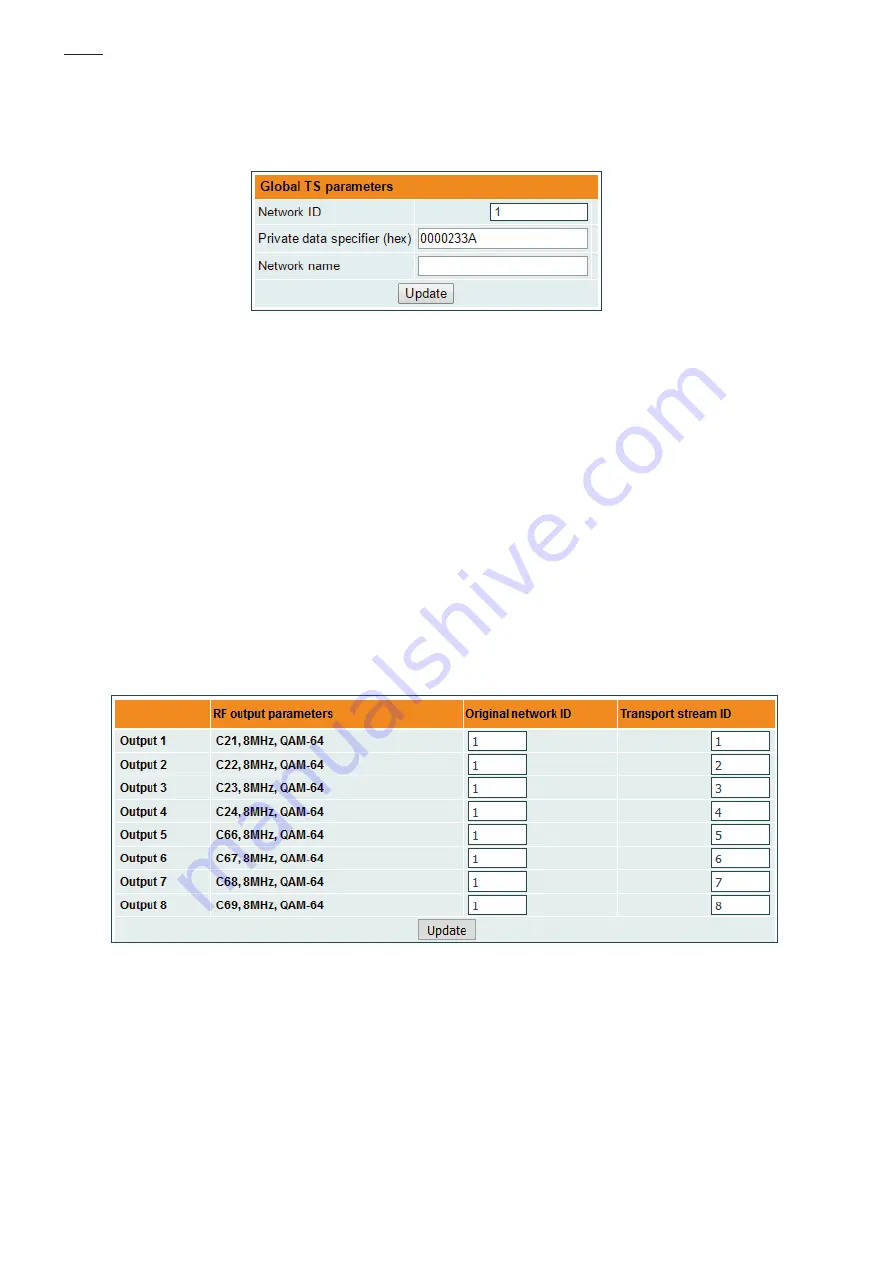
9
NOTE
: If transparent mode is selected (tdx480, tdq480 only), all services of transponder will be passed to the output, including
original PAT, SDT, PMT, EIT, CAT, NIT tables. All changes that were made to these tables (new titles, LCN) will be disregarded.
No more than 95% of output bandwidth usage is recommended, otherwise bitrate overflow might occur.
6.5. NIT
Several tables related to NIT generation exist in this section. Figure 16 "Global TS parameters" describes following TS
parameters:
Figure 16. Global TS parameters
“Network ID”: is unique number within the geographical region defined by the “country code”. For a cable network usually
this is a single country code plus 0x2000 (8192). If there are more connected modulators in the network, they must have
the same Network ID.
Proper value depending on your country and operator can be found here:
http://www.dvbservices.com/identifiers/network_id?page=1
“Private data specifier (in hex format)”: can be inserted in the NIT table for proper LCN description. This value is described
in TS 101162 specification. NorDig standard requires 00 00 00 29 value, UK should use 00 00 23 3A value.
Other options can be found here:
http://www.dvbservices.com/identifiers/private_data_spec_id?page=1
The parameter will not be inserted into NIT if value is set to zero.
„Network name“ is the name of the network.
The 2
nd
table in the page describes Transport stream ID and Original network ID of each channel (see Figure 17). Each
stream in a network must have unique ID, called „Transport stream ID“. An Original_Network_ID is defined as the “unique
identifier of a network”. It can be linked to NetworkID or used value from this location:
http://www.dvbservices.com/identifiers/original_network_id?page=1
Figure 17. Transport stream and original network IDs






































